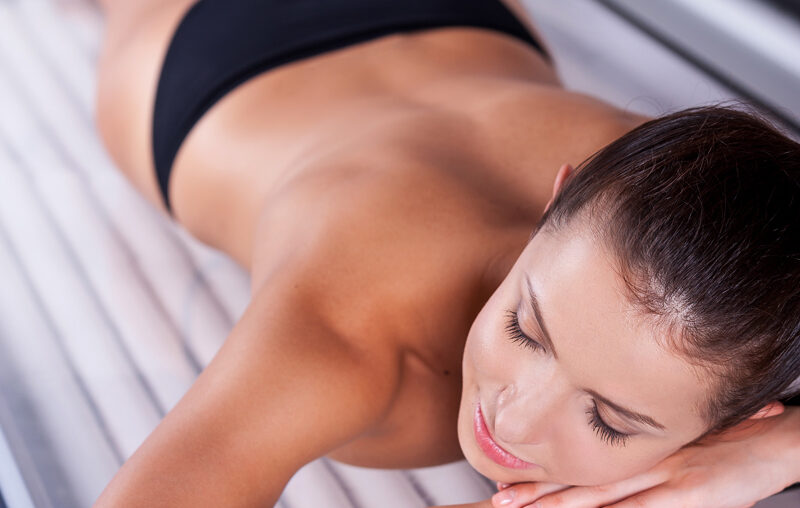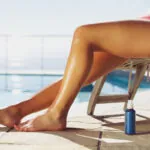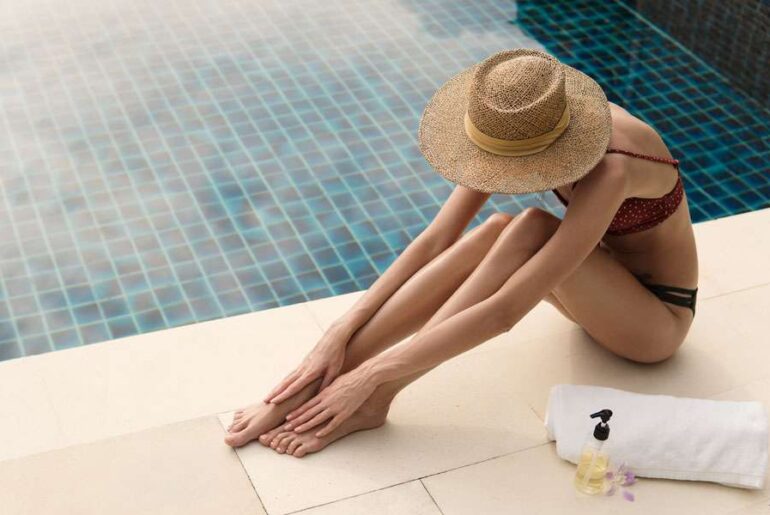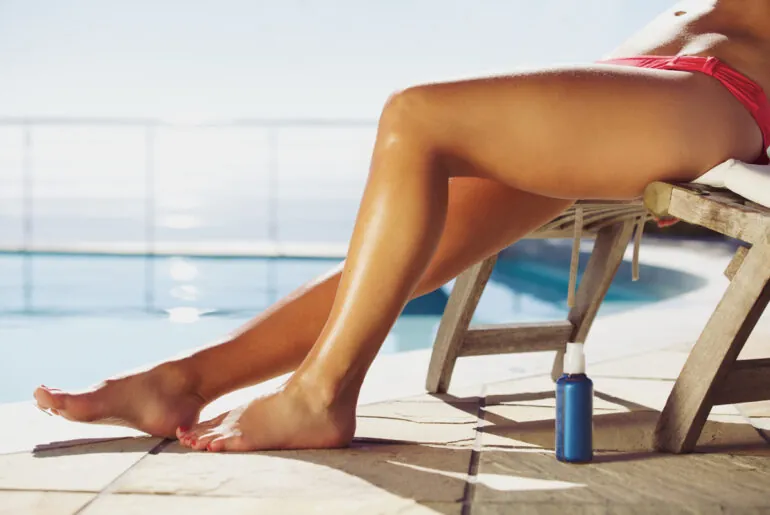Indoor Tanning Tips that will Help You with the Tanning Process
Many people enjoy getting a good tan but do not like spending a lot of time in the sun. One way that they overcome this problem is by tanning their skin in tanning booths. Indoor tanning provides many people with an alternative to sun bathing. This tanning method is quick, fairly easy, and gives people a tan that lasts for at least 30 days. Even though indoor tanning is a convenient thing to do, there are some precautions that people must take to avoid damaging their skin. Here are some indoor tanning tips that will help people with the tanning process.
-
Avoid Damaging your Skin
Most people might not think that tanning beds and booths will damage their skin, but the reality is that these specialized pieces of equipment can destroy a person’s dermal layer, like the sun. When people expose their skin to the sun, their bodies are impacted by three different types of UV rays. The sun’s UV rays are broken down as UV-A, UV-B, and UV-C. UV-A and UV-B rays are the types of energy that are emitted by tanning equipment. These two types of rays are used for tanning because they cause the least damage to a person’s body.
UV-C rays will damage a person’s skin. This type of UV ray is responsible for causing cancer and creating sunburn. Even though UV-A and UV-B are best suited for indoor tanning, these two types of rays can still cause damage to a person’s body. People who tan must wear some sort of protection that reduces the impact of UV light.
When people use indoor tanning equipment, they are exposed to 95% UV-A and 5% UV-B. This amount of UV light is similar to how the sun shines during the summer. Once a person’s skin is exposed to UV light, the top layer (also called the dermis) begins to produce melanin. It happens every time they are exposed to the sun for a long period. Believe it or not, a person tans their skin reacts to sunlight as a defense mechanism. This defense mechanism is necessary so that a person’s dermis will be burned away or mutated by sunlight. The longer a person is exposed to the sun, the more their body produces melanin. Darker-skinned people can withstand longer tanning times without damaging their skin because they naturally have more melanin in their dermis.
-
Skin Type and the Tanning Process
People come in a variety of skin colors, but only certain types of skin tones are more suited for tanning than others.
Darker-skinned people can naturally withstand the tanning process for a longer time than fair or lighter-skinned individuals. Fair or lighter-skinned people cannot stay out in the sun as long because they do not have more melanin, unlike darker-skinned individuals. Since this is the case, fair or lighter-skinned people cannot and should not use indoor tanning equipment for long.
Most tanning facilities management and attendants typically have some knowledge about skin tones. Darker-skinned people will tan easier than lighter-skinned individuals. There is a skin type chart that some facilities use in order to determine how long people should tan. Fairer-skinned people should only tan between 20 to 33 minutes. Lighter-skinned people should tan between 28 to 47 minutes, and darker-skinned people can tan for up to 227 minutes. Remember that a tanning chart is just a basic guideline for this process. Some people will be able to tan for a greater period of time and others less.
When most people tan their skin, they do so on an incremental basis. Most tanning personnel recommend that people start slowly and gradually with the tanning process and increase the frequency of this process over time. Many indoor tanning facilities will start new clients with 5-minute tanning sessions before increasing their tanning times up to 12 minutes. People are also warned to wait before tanning their skin every 48 hours in order to avoid damage. A good schedule for tanning typically includes three sessions per week. People who tan should also keep in mind that the US Food and Drug Administration (FDA) prohibits clients from 1 indoor tanning session within a given day. By law, tanning facilities must not allow anyone to go through this process more than once within 24 hours.
-
Skin Preparation for Tanning
There are some things that tanners should do to their skin before they start a session. First-time tanners are encouraged to exfoliate their skin for up to one week before starting their first indoor sessions. Commercial exfoliating kits are great for this activity. People can also use a body pouf to prepare their skin gently. This process is necessary for removing dead skin and creating a smooth surface. It will allow the UV rays to penetrate the skin more clearly and effectively. Indoor tanning lotions work the same as regular tanning creams. The lotions help to maximize the process, and people should put them on before they begin to darken their skin.
When clients tan, they typically wear a bathing suit or undergarments. Many people also tan entirely nude. If a person decides to tan in the nude, they should wear a small towel or protective covering for the sensitive areas of their bodies. That is necessary because the sensitive areas on most people’s bodies are prone to damage by UV light exposure.
People must check with the rules and procedures of a particular tanning facility in order to determine if tanning nude is acceptable in their location. Tanners should remove all jewelry, eyeglasses, and contact lenses before they begin the process. The FDA requires that people wear some type of eye protection before they tan, and most facilities will give people a set of UV tanning goggles in order to protect their eyes from the strong light. Items such as makeup, perfume, and deodorant should not be worn by tanners as well since they can act as a shield for the skin during the tanning process.
-
Moisturize your Skin before you Tan
While it is true that people should not wear any type of product on their skin before tanning, they should moisturize their skin before they begin this process. Moisturizing the skin will help people to receive a better tan. Skin that is moisturized absorbs UV rays with better results. That means that moisturized skin will tan faster and more effectively. So, people should use a special tanning lotion to moisturize their skin. Bronzers can also be used as a part of the moisturizing process for the purpose of tanning, and these products can help enhance the skin color by using DHA, which causes the dermis to darken between 2 to 4 hours after use.
>>Click here to see prices, specs, and reviews of the best moisturizer on Amazon.com<<
-
Health Conditions that Prevent Tanning
Tanning is an activity that is not suited for everyone. Obviously, people who have bad skin or some type of major skin condition should not tan. People with high blood pressure or who take antibiotics or specialized prescriptions should also avoid tanning. A medication chart is usually available at local tanning salons. These charts typically point out the types of health conditions and prescription medications unsuitable for tanning.
-
Understanding the Different Types of Tanning Equipment
There are different types of tanning equipment that people can utilize for tanning. Regular tanning beds and Super beds are two of the most common types of equipment found inside most facilities. A regular tanning bed requires 3 to 5 sessions a week in order to maintain a tan and should only be used for up to 15 minutes. A Super lay-down model allows for 2 to 3 sessions a week, with each session lasting only 15 minutes.
Super stand-up equipment is located in some facilities, and this unit will enable people to remain standing while tanning their skin. This piece of equipment allows for 2 to 3 sessions a week for up to 15 minutes. All tanning equipment uses different wattage and bulbs for the tanning process. Another thing that should not be forgotten when tanning is that UV-A rays are responsible for causing the melanin pigments to darken, and UV-B rays will stimulate melanin production. Tanning beds will emit UV rays electronically in order to create this process.
-
The 3-Step Process to Tanning
Some tanning facilities use a 3-Step system for tanning their clients. This process is used to create a fast and dark tan. Each step is utilized to darken a person’s color and to extend the life of the tan.
The first step involves the use of tan builders such as vitamins and nutrients. It builds color quickly into the skin. The next step is a tan booster which provides advanced ingredients that help to deepen the color of a person’s skin.
This is accomplished by greater energy and oxygen intake. The final step is dark tan extenders that will aid in the further development of a person’s skin color. Ingredients such as vitamins and copper are used for this process. People can only tan for so long before they reach a point where they can safely darken their skin. Once a person reaches this stage, they should stop the tanning process. Each person will know when they reach their limit. A person should not go over a recommended schedule for tanning.
-
After a Tanning Session Ends
People should wait at least 4 hours before taking a shower or bathing when they are finished tanning. A person’s skin still manufactures melanin long after the tanning procedure has ended. Their skin will need more time to manufacture the tan, and bathing will interfere with this process. People can also put on special after-tanning lotion to moisturize their skin after the process is completed.
-
Additional Indoor Tanning Tips for Your Consideration
People should make it a point to get their tans as even as possible. They can accomplish it by frequently rotating their bodies through a tanning cycle. People should avoid folding parts of their bodies while they are inside the tanning bed. They should avoid performing actions such as placing their chin on their chest or bending their legs. White tan lines will reveal the covered parts of a person’s body that has been during the tanning process.
People should pay close attention to areas of their body that are somewhat resistant to the tanning process. The underarm and upper thigh areas are two places that should be given more consideration. Tanners should also remember that once melanin production begins within a person’s body, the less exposed areas will naturally darken as well. People should also wear some kind of lip protection during the tanning process. A person’s lips cannot produce melanin, and the UV light will burn this area, causing it severely chap or blister. Lip balm is generally used to block UV light during the tanning process.
Some people will use indoor tanning during the winter months and sun bath during the summer season. Once again, this might lead to overexposure of the skin. People are strongly encouraged to limit tanning to a particular season of the year in order to avoid long-term skin problems. These indoor tanning tips will help people safely and effectively tan their skin.






